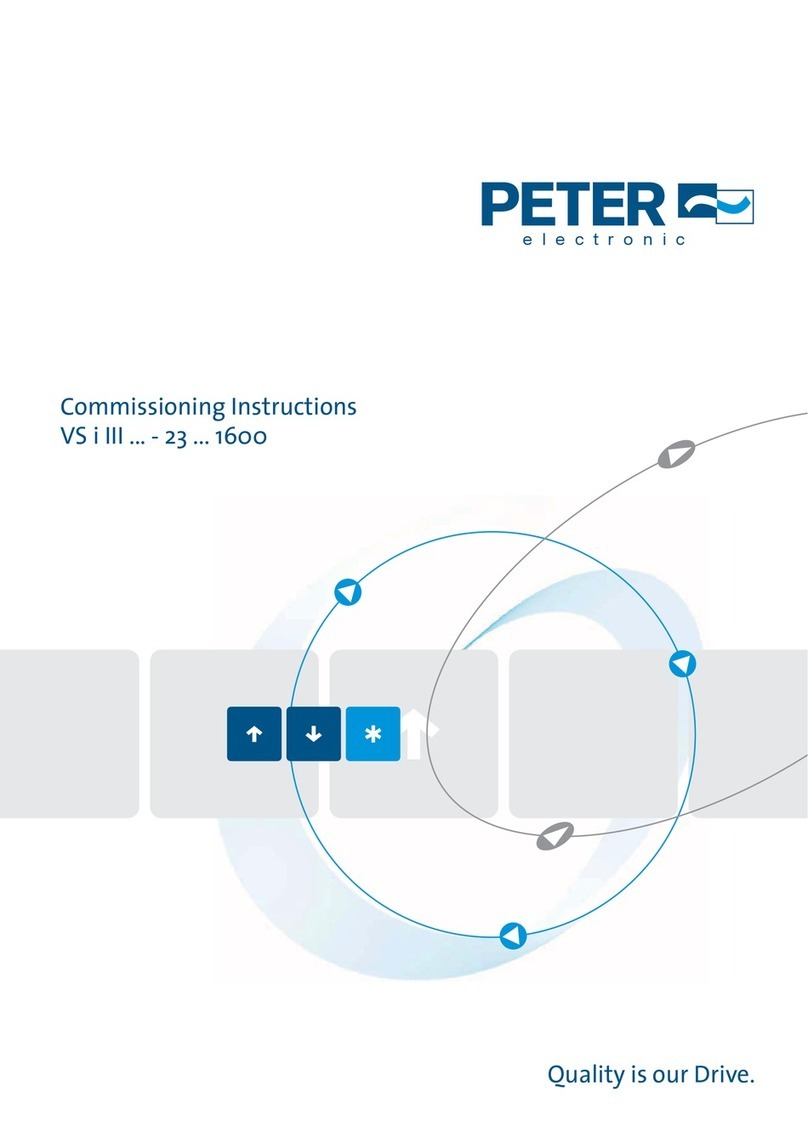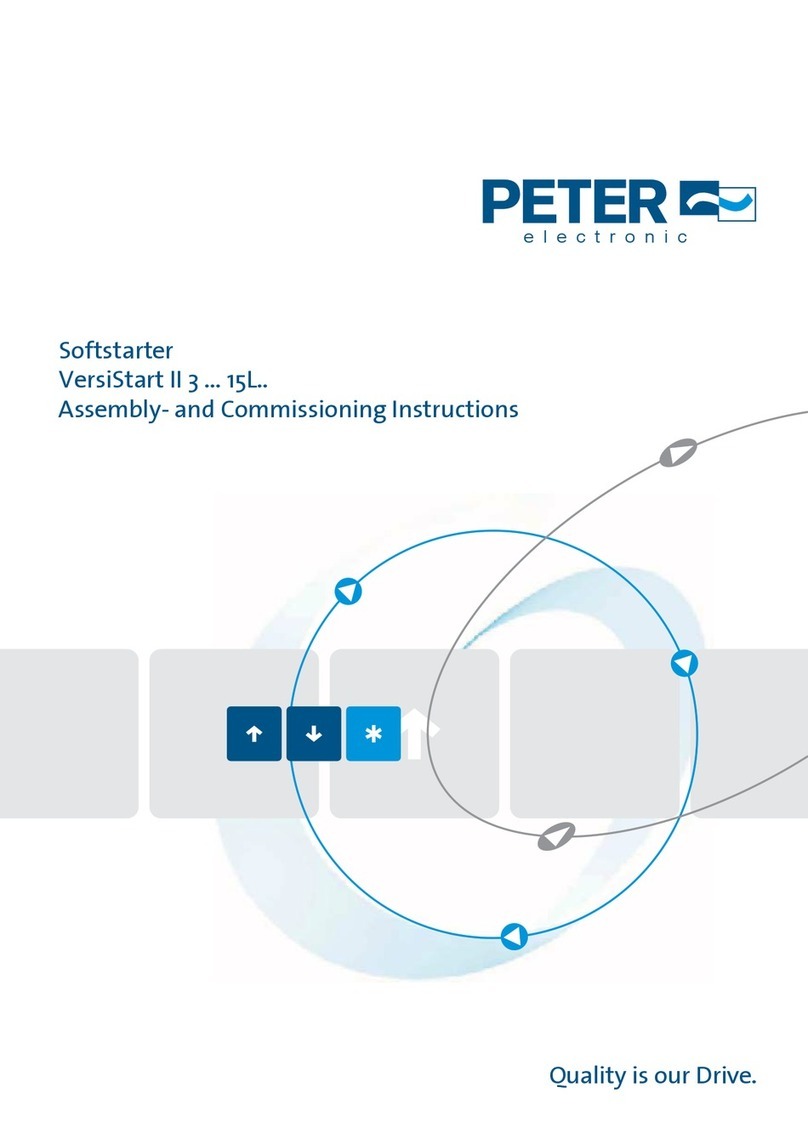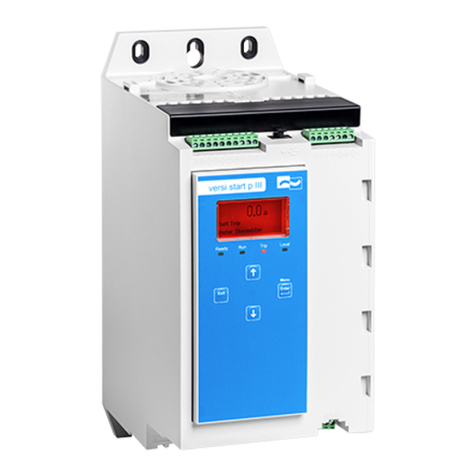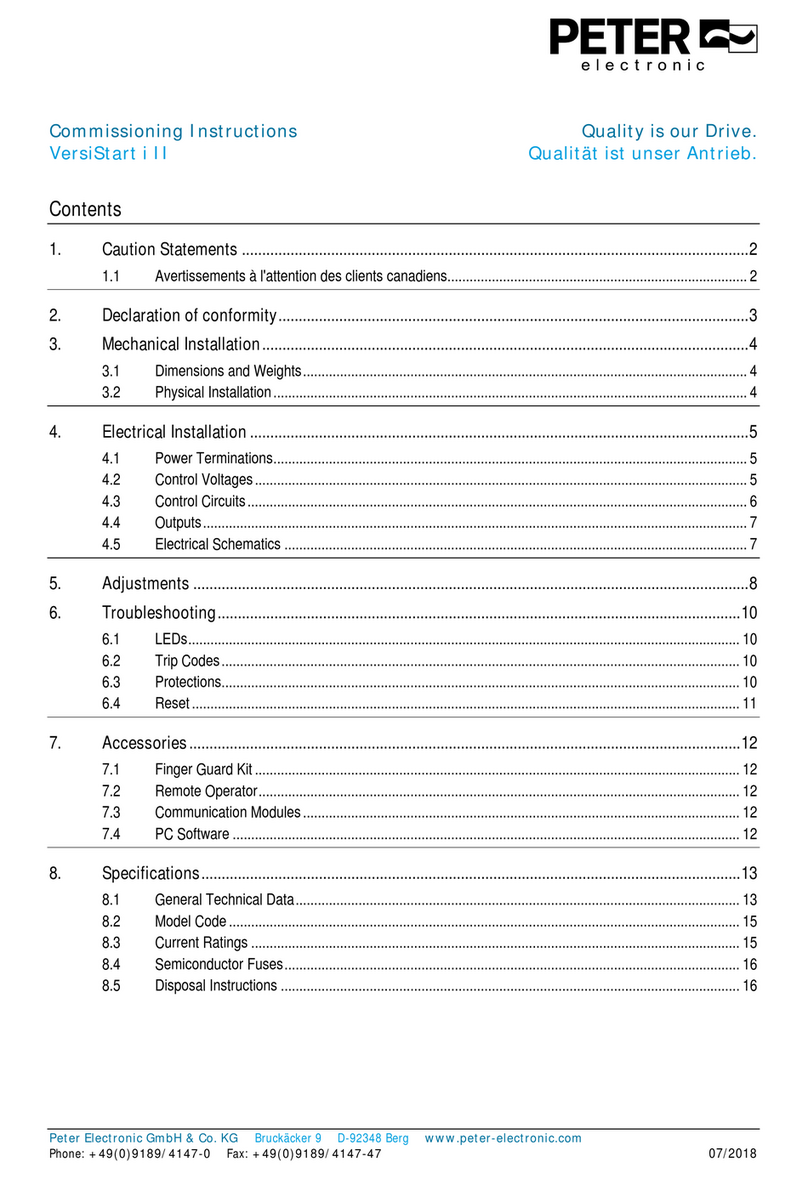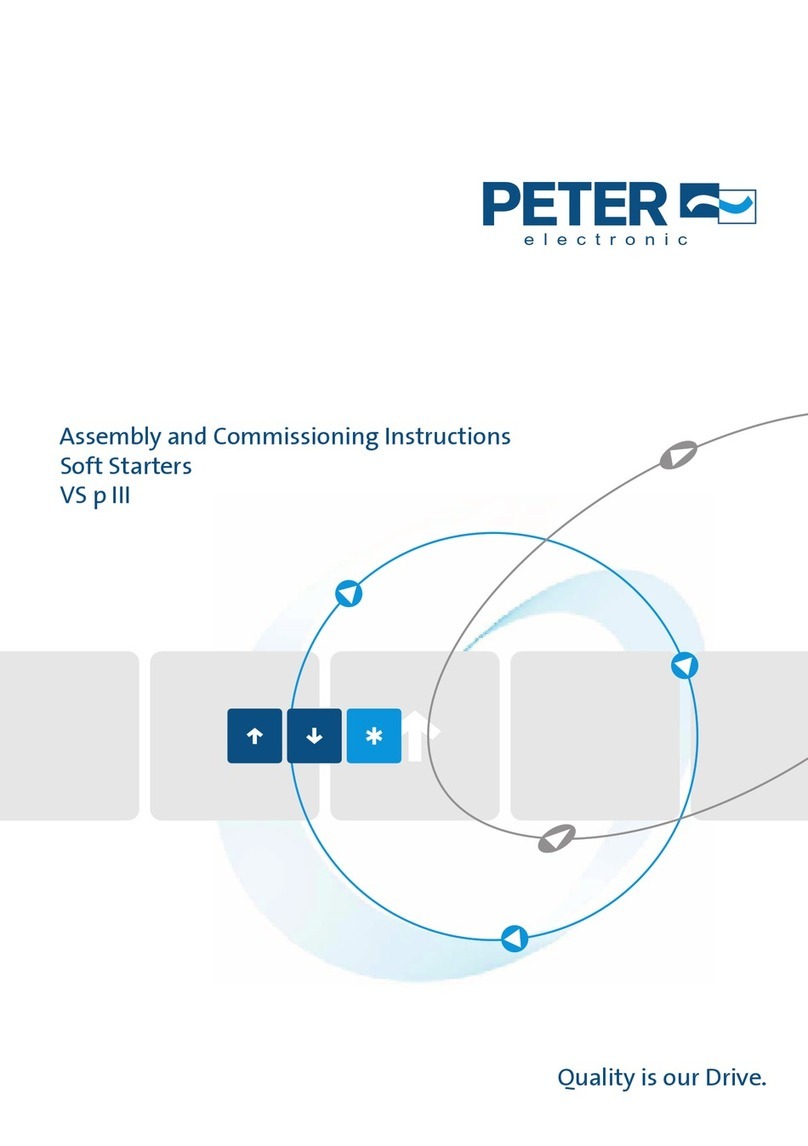
VB230/400-6/25/30L (LP) 7
7. Functional description (see connection diagram)
After the operating voltage on 1L1 (L1) and 3L2 (L2) has been switched on, the main contactor
interlock X5 (X5), X6 (X6) and, in the case of the circuit-board version, the fault signaling contact
(X10), (X11) closes. The motor can be started.
A starting logic makes sure that, when switching the plant on with the master switch while the
motor is still switched off, braking is not initiated.
The fully automatic run of the braking interval starts when a drop of the motor voltage is detected
on the terminals 2T1 (T1), 4T2 (T2) and 6T3 (T3). During braking, the main contactor is inter-
locked via the contact X5 (X5), X6 (X6). After a delay time which, dependent on the amount of the
remanent voltage of the motor, optimizes itself, the integrated braking relay pulls in. After the
contact bounce time has been waited out, a controlled d.c. current is fed into the motor winding.
The magnetic field resulting from this has a braking effect on the still rotating rotor. The d.c.
current is generated by a thyristor phase control. Special suppressor circuits protect the power
semiconductors against overvoltage. With the potentiometer I (P2), the braking current (and thus
the braking torque) can be adjusted within a range of 10 … 100% of the rated device current. The
integrated motor standstill detection, which, if the 6T3 (T3)-terminal is connected, functions via
the amount of the remanent voltage and, if the 6T3 (T3)-terminal is not connected, via the brake
current waveform, switches the braking current off approx. 1.5s after a motor standstill has been
detected. To be able to adapt the device to a variety of motors, it is possible to adjust the stand-
still threshold via the potentiometer n0 (P1).
Faults, that occur during braking, are indicated via a signaling light (LED), and, in the case of the
circuit-board version, additionally via a fault signaling output (X10), (X11).
If more safety (redundant system) is required for initiating braking, it is possible to additionally
connect a normally closed contact of the motor contactor to the terminals X3 (X1), X4 (X2). Then,
braking will be initiated by two processes which are independent of each other.
Warning:
To ensure a reliable standstill detection function, it is necessary to comply
with the following:The braking current must not exceed (3) three times the
amount of the rated motor current. The VB …-L (LP) must be operated with
the 6T3 (T3)-terminal being connected for feedback.
If the VB-L is operated without the 6T3 (T3)-terminal beeing connected,
which always applies in the case of single-phase applications, it is to be
ensured that braking current flows at least for a period of 1.5 s before the
motor comes to a standstill, as no motor standstill is detected within this
period of 1.5s and the braking current would then flow over the total
maximum braking time. This could cause destruction of the motor and fault
indications of the braking device.
Note: If the braking time at rated device current is too short, due to the fact that the
centrifugal masses to be slowed down are too large, either a device with a
longer braking time can be inquired of the producer or a device featuring a
higher rated current has to be used.
